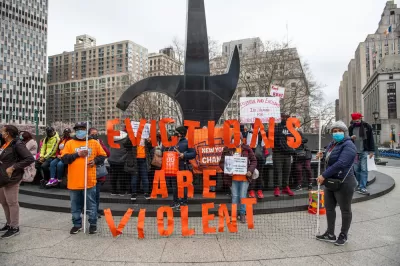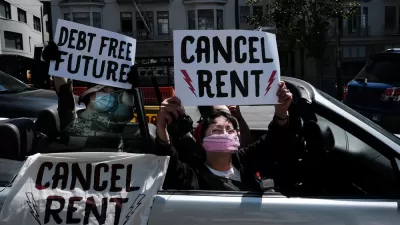With relatively few strings attached to the $350 billion in funds states and municipalities will receive, the door is wide open for governments to make a dent in their housing needs. But will they?

When President Joe Biden signed his $1.9 trillion coronavirus relief package into law in March, it came with significant funding to stanch the housing emergencies created by the pandemic. The American Rescue Plan Act (ARPA) has $21.5 billion for emergency rental assistance, $10 billion for mortgage relief, $5 billion for housing choice vouchers, $5 billion for homelessness services and shelter acquisition, $750 million for housing assistance for Native Americans and Native Hawaiians, and $100 million for rural housing assistance.
But it turns out that is only a fraction of the funding in ARPA that could be used for affordable housing.
The act contains more than $350 billion for states and local municipalities—a fairly open-ended pot of money that can be used to fund a huge swath of needs, such as development, social safety net, education, public health, and more. In mid-May, the U.S. Department of the Treasury published guidance for how states and cities can spend the billions coming their way, and it makes clear that affordable housing development, housing vouchers, housing counseling, and other programs are approved uses when spent in Census tracts with high concentrations of low-income residents or on people disproportionately impacted by the pandemic.
Preservation Working Group, a Pittsburgh coalition of housing advocates, developers, public health workers, and others, is lobbying Pennsylvania state officials to use ARPA funds for affordable housing and to bolster the participation of developers of color in the affordable housing industry. The coalition faces something of an uphill battle, with a ...
FULL STORY: Rescue Plan has Billions Available for Housing, Advocates Urge Officials to Take It

Study: Maui’s Plan to Convert Vacation Rentals to Long-Term Housing Could Cause Nearly $1 Billion Economic Loss
The plan would reduce visitor accommodation by 25,% resulting in 1,900 jobs lost.

North Texas Transit Leaders Tout Benefits of TOD for Growing Region
At a summit focused on transit-oriented development, policymakers discussed how North Texas’ expanded light rail system can serve as a tool for economic growth.

Why Should We Subsidize Public Transportation?
Many public transit agencies face financial stress due to rising costs, declining fare revenue, and declining subsidies. Transit advocates must provide a strong business case for increasing public transit funding.

How to Make US Trains Faster
Changes to boarding platforms and a switch to electric trains could improve U.S. passenger rail service without the added cost of high-speed rail.

Columbia’s Revitalized ‘Loop’ Is a Hub for Local Entrepreneurs
A focus on small businesses is helping a commercial corridor in Columbia, Missouri thrive.

Invasive Insect Threatens Minnesota’s Ash Forests
The Emerald Ash Borer is a rapidly spreading invasive pest threatening Minnesota’s ash trees, and homeowners are encouraged to plant diverse replacement species, avoid moving ash firewood, and monitor for signs of infestation.
Urban Design for Planners 1: Software Tools
This six-course series explores essential urban design concepts using open source software and equips planners with the tools they need to participate fully in the urban design process.
Planning for Universal Design
Learn the tools for implementing Universal Design in planning regulations.
City of Santa Clarita
Ascent Environmental
Institute for Housing and Urban Development Studies (IHS)
City of Grandview
Harvard GSD Executive Education
Toledo-Lucas County Plan Commissions
Salt Lake City
NYU Wagner Graduate School of Public Service





























